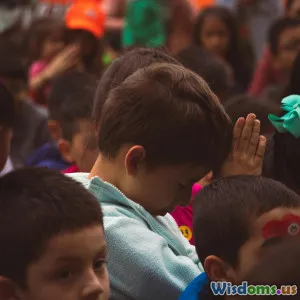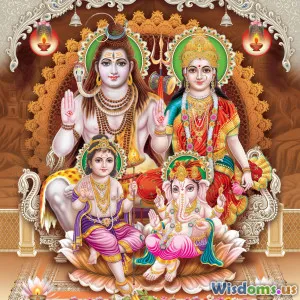
Unpacking Shabbat Rituals A Window into Jewish Life
16 min read Explore key Shabbat rituals and their meaning, offering insights into Jewish tradition and spiritual practice. (0 Reviews)
Unpacking Shabbat Rituals: A Window into Jewish Life
Each Friday at sunset, Jewish households across the globe embrace a set of rituals that pause the relentless pace of modernity—a tradition called Shabbat. Far more than a day of rest, Shabbat is an intricate choreography of actions, blessings, and moments that illuminate core values and serve as a vibrant thread weaving together the fabric of Jewish identity and community. By exploring these revered rituals, we gain an intimate window into the heart of Jewish life.
Welcoming Shabbat: The Ritual of Transition

The atmosphere of Shabbat is palpable even before it officially begins. As the sun sets on Friday evening, Jewish families worldwide mark the week's transition by kindling two candles—a gesture radiating warmth and serenity. Lighting the Shabbat candles traces back centuries and is typically performed by the woman of the house. This act is more than symbolic; it invites peace into the home.
How and Why Candles are Lit: The candles are lit 18 minutes before sundown, a halachic tradition ensuring the sanctity of Shabbat is maintained. The flame represents two biblical commandments: remembering (zachor) and keeping (shamor) the Shabbat. After lighting, a blessing is recited, covering the eyes to mark the temporal divide from ordinary to sacred time.
- Example: In Jerusalem, the city collectively slows as synagogues fill and households bask in candlelight, stilling weekday chaos.
Candles on Shabbat also symbolize an aspiration for spiritual, emotional, and domestic harmony. This tangible ritual provides a mindful pause, asking families to reflect on what's precious—an oasis amid nonstop modern routines.
Blessings Over the Wine: The Kiddush Ceremony

After the candles, the next iconic Shabbat ritual is Kiddush—the sanctification of the day over a cup of wine or grape juice. This custom begins Shabbat dinner with sacred intention.
Step-by-Step:
- The head of the household fills a special goblet (a Kiddush cup), often ornate and crafted from silver.
- Holding the cup, they recite a blessing, thanking God for the fruit of the vine and the holiness of Shabbat. The words themselves are a tapestry of tradition, echoing heritage and gratitude.
- The wine is sipped, then passed to family and guests in turn.
Kiddush is not only theological but deeply social.
- Observational insight: In many Sephardic homes, crowding around a challah-laden table, multiple generations participate: grandparents intone the ancient words as children peek over the rim of the cup.
The Kiddush also acts as a teachable moment for younger members, offering experiential insight into the sanctity of time and strengthening familial connections—a value deeply embedded within Judaism.
The Challah Bread: Symbolism and Sharing
Few depictions of Shabbat are complete without two picturesque loaves of challah resting beautifully beneath a special covering. Challah is more than a food—it's a symbol steeped in meaning.
Key Symbolisms:
- Double loaves echo the biblical manna that fell in a double portion for the Israelites on Shabbat during the Exodus.
- Braided shape represents unity and peace, as strands interweave much like community or family members.
- Covering the challah enacts humility; the bread "waits its turn" for blessings after the wine—a lesson in prioritization and mutual respect.
How Challah Is Shared: After Kiddush, the challah is uncovered, a special blessing is recited over it (hamotzi), and pieces are passed around the table. Dipping in salt recalls ancient Temple offerings. Even within non-observant households, baking or buying challah becomes a powerful tradition, connecting the mundane act of eating bread to a shared history and a higher purpose.
- Contemporary twist: In many communities, hosts try inventive challah variations—whole grain braids, vegan recipes, or fun shapes for children—ensuring the ritual stays alive and relevant to every generation.
Blessings for Children: Birkat Yeladim

Arguably one of the most tender moments of Shabbat is the parental blessing of children, a centuries-old ritual that uniquely weaves love and aspiration into the weekly rhythm.
How It’s Done: Parents place their hands on each child’s head (or shoulders) and recite traditional words:
- For boys: "May God make you like Ephraim and Menashe."
- For girls: "May God make you like Sarah, Rebecca, Rachel, and Leah."
- Followed by the Priestly Blessing: "May God bless you and guard you… may He show kindness and grant you peace."
Why This Ritual Matters:
- Affirmation and love: It sets a tone of safety and significance to each child.
- Modeling values: Even children raised in secular environments recall this gesture as a source of self-worth and belonging well into adulthood.
- Societal impact: By championing the next generation, Jewish continuity is ensured, reinforcing the communal bonds that are the lifeblood of Jewish existence.
Parents often make the moment personal, adding words relevant to the child’s week or milestones, forging a meaningful blend of tradition and real-life connection.
Shabbat Meals: Elevating the Everyday
The culinary centerpiece of Shabbat is, without question, the Sabbath meal. Far from an ordinary dinner, these meals fuse ancient dietary laws, seasonal foods, and recipes passed down generations.
Recipe for Sanctity: Shabbat meals traditionally begin with challah and include:
- Appetizers like gefilte fish or salads
- Chicken soup (with signature matzah balls)
- Main courses such as roast chicken, brisket, or vegetarian dishes
- Dessert—sometimes a homemade kugel or seasonal fruit
What sets these meals apart isn’t simply the food, but the pacing:
-
Leisurely, purposeful eating: Electronic distractions put aside, conversation and singing often embellish the night.
-
Zemirot: Special songs, blending Hebrew and vernacular, link families not just across the world, but across centuries.
-
Concrete example: In Moroccan communities, for example, slow-cooked dafina simmers overnight, infusing homes with aroma that signals Shabbat to all senses.
By mingling taste, song, and shared story, Shabbat dining keeps Jewish history alive not just in memory, but on the palate as well.
The Synagogue Experience: Prayer and Community

For many, the heart of Shabbat beats strongest in the synagogue. Communal worship serves multiple foundational roles in Jewish life:
- Social framework: Regular attendance fortifies communal ties, ensures every member is seen and supported, transcending individual backgrounds or ages.
- Liturgical structure: Prayers specific to Shabbat differ from weekday services and are laced with poetry, gratitude, and commemorations.
- Torah reading: Saturday morning, the week’s Torah portion (parasha) is chanted aloud. Often, community milestones—a bar or bat mitzvah, a yahrzeit remembrance—are publicly noted.
Actionable Advice for Visitors:
- Even non-Jews or secular Jews will be welcomed with hospitality—be sure to dress modestly, and note that photographs or phone use inside are generally discouraged.
- Stay afterward for kiddush (a communal snack), a hallmark of Shabbat hospitality.
Recent decades have seen a diversification of styles: egalitarian, Orthodox, Reform, Conservative, and Renewal groups each place their unique stamp on the rhythm and feel of Shabbat worship. What unites them all is the centrality of community—a rare antidote to social isolation.
Prohibitions and the Art of Rest: Shabbat's Unique Boundaries
One distinctive feature of Shabbat is the practice of melachot—39 categories of creative work traditionally prohibited from sunset Friday to nightfall Saturday. These built-in borders distinguish Shabbat from the rest of the week, not as burdens, but as liberations.
Key Examples of Prohibitions:
- Using electronics (phones, computers, television)
- Driving or riding in vehicles
- Writing or commerce
Instead, participants embrace analog pleasures: board games, reading, strolling, or real face-to-face conversation. Many modern Jews, even those not strictly observant, choose to digitally detox over Shabbat, finding restorative power in intentional disengagement from screens.
- Anecdote: In Tel Aviv, a city more famous for its nightlife, “unplugged Shabbat” movements celebrate tech-free Friday nights, drawing not only religious participants but seculars craving meaningful respite.
This artful rest is more radical than abstention—it’s an affirmation that life consists of more than productivity. It’s an invitation to rediscover presence in a hyperconnected world.
Havdalah: The Ceremony of Separation

As three stars appear in the Saturday evening sky, Shabbat is ushered out with havdalah—a sensory ceremony that sweetens transition back to the ordinary week.
Elements of Havdalah:
- Wine or grape juice: Recited over another kiddush cup
- Fragrant spices (besamim): Passed and inhaled, symbolizing the lingering sweetness of sacred time
- Elaborate, multi-wicked candle: Its flame woven like the braids of community
After distinct blessings for each element, the candle is doused in the wine, and participants wish each other a "Shavua Tov" (a good week).
Practical takeaway: The spices, held in ornate boxes, can be prepared from cloves, cinnamon, or myrtle. The act of scenting the hands and face helps transfer the serenity of Shabbat’s spirit into the denser demands of the coming days.
In Morocco, Yemen, and even in American suburbs, the melody of havdalah songs bridges ancient and modern worlds, capping Shabbat with shared hope and renewal.
Modern Shabbat: Adapting Rituals for Today

Within the rapidly shifting realities of 21st-century life, Shabbat rituals have proved remarkably resilient—though often adapted for new contexts.
In the Diaspora:
- Urban families may gather in small apartments, using virtual connections to unite with distant relatives over Zoom candle-lightings during disruptions like the pandemic.
- Creative communities experiment—musical Shabbatons, neighborhood potlucks, outdoor gatherings in public parks.
Among Young Adults:
- Groups like OneTable help millennials and Gen Z host personalized Shabbat dinners, sometimes fusing traditional blessings with modern menus, poetry readings, or social activism themes.
- Interfaith couples share Shabbat as a window into Jewish values—welcoming friends of all backgrounds to their tables.
Shabbat’s constants—pausing, blessing, connecting—provide structure and renewal, but its flexible packaging ensures every generation finds relevance and belonging.
The Enduring Power of Ritual: Shabbat as a Jewish Lifeline
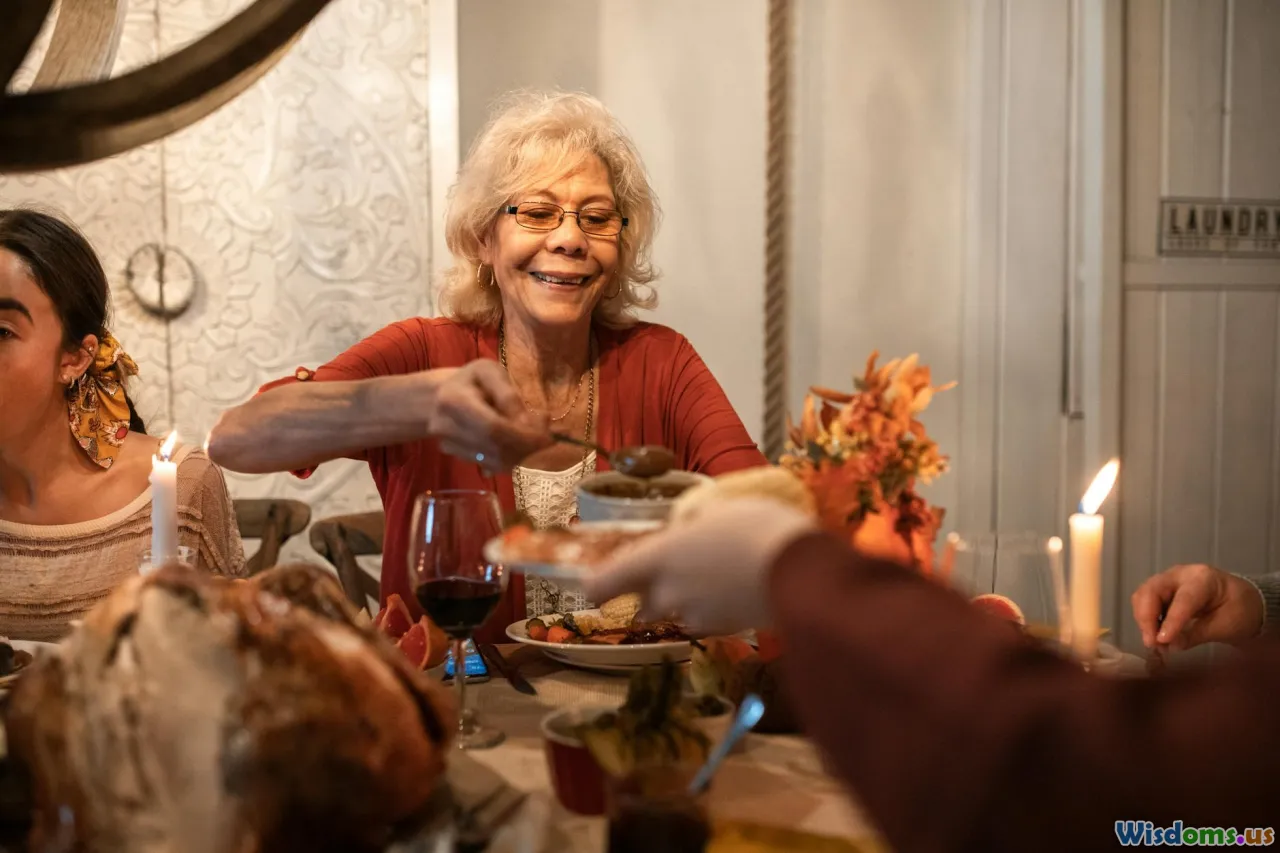
While Shabbat’s external rituals might shift with the tides of time and place, the internal logic endures:
- Weekly rituals tie past, present, and future together.
- They anchor personal identities and collective memories.
- The simple commitment to weekly pause and gather cultivates resilience that has sustained Jewish communities through dispersion and trial.
Every candle lit, every blessing uttered, and every meal shared serves as a miniature sanctuary—a place of rest, spiritual refreshment, and connection. Whether rooted in ancient Jerusalem, bustling through New York, or lighting up the quiet streets of Buenos Aires, Shabbat isn’t just a ritual; it’s a sustaining lifeline and a universal message: we are more than our labor, richer for our relationships, and forever shaped by our sacred stories.
Rate the Post
User Reviews
Popular Posts












